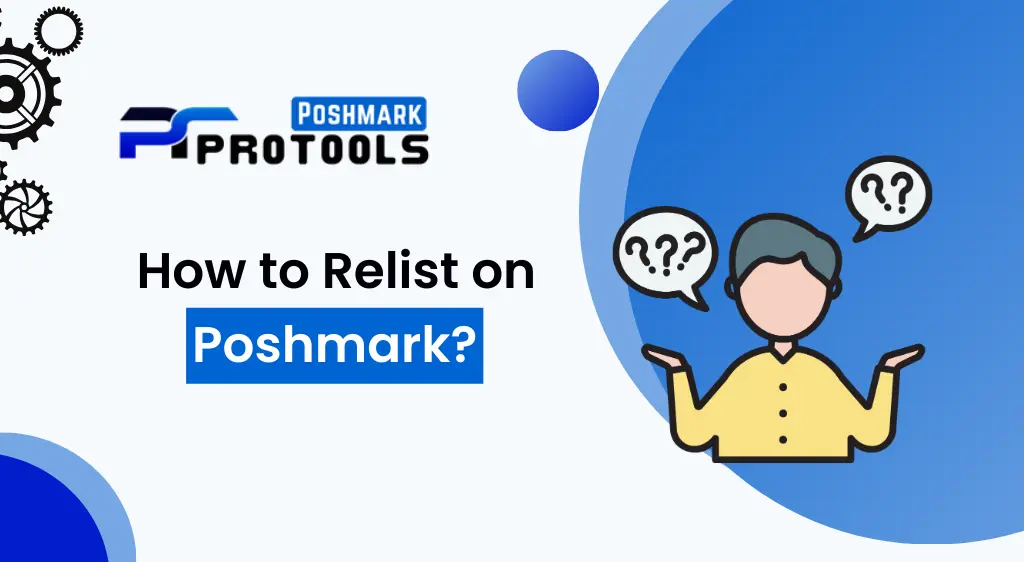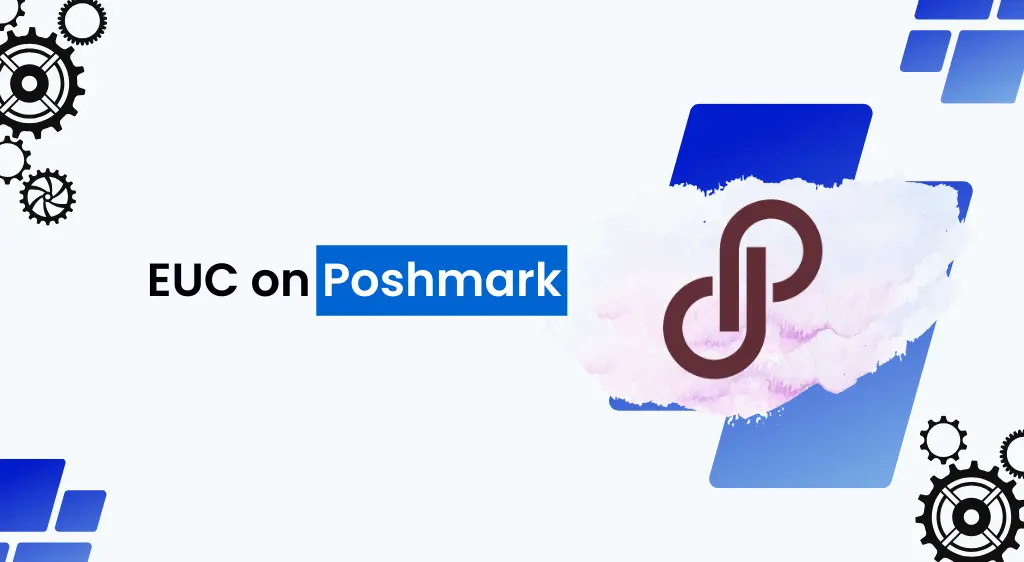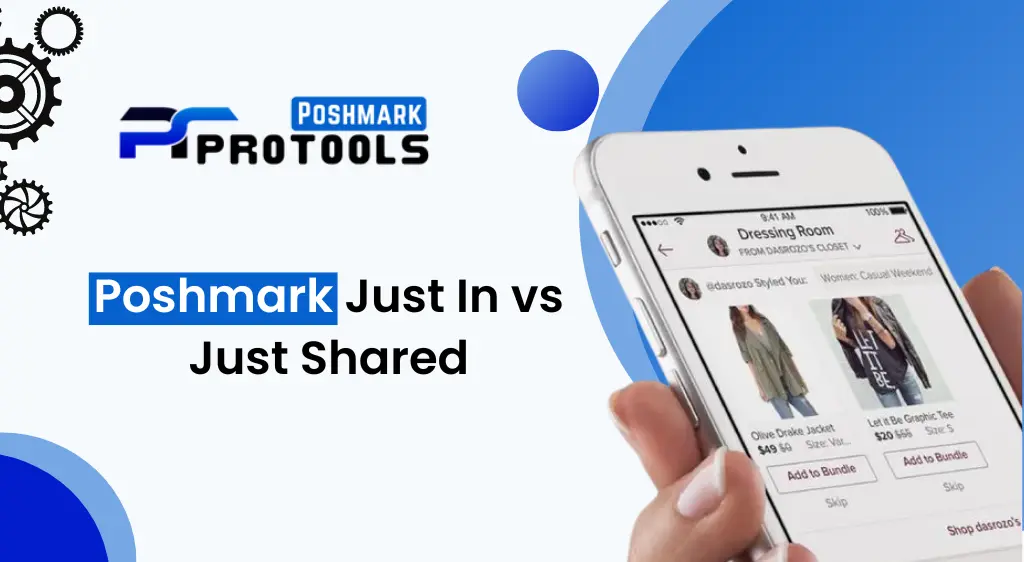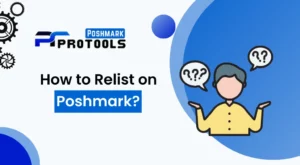
Etsy, Thredup or Poshmark – Which One is Best to Sell on

If you’re looking to turn your passion for vintage finds or handmade goods into a profitable business, you might be wondering where to start. The world of online marketplaces is vast and ever-growing, with options like Etsy, ThredUp, or Poshmark leading the way. But which one is the best fit for you as a seller?
Etsy, ThredUp, and Poshmark all have their unique advantages and drawbacks. Etsy is a go-to for handmade, one-of-a-kind items, while ThredUp specializes in secondhand fashion. Poshmark, on the other hand, is a social marketplace for fashion where users can buy and sell new and gently-used clothing and accessories.
As a seller, it’s crucial to consider factors like selling fees, shipping options, and target audience when choosing a platform. Each marketplace has its own fee structure and shipping policies, so it’s essential to do your research to ensure you’re making the most profit possible.
It’s also essential to consider your target audience. If you’re selling vintage finds or handmade goods, Etsy might be the best fit, as it’s known for catering to a niche market of buyers who value unique and personalized items. If you’re looking to sell secondhand fashion, ThredUp’s established buyer base may be your best bet. And if you’re targeting younger, fashion-conscious consumers, Poshmark’s social marketplace model could be the perfect fit.
Ultimately, the best platform for you to sell on depends on your specific needs and goals as a seller. Only by weighing the pros and cons of each marketplace and considering your target audience, you can make an informed decision and start growing your online business.
To help you out we bring you this Etsy vs ThredUp vs Poshmark guide in which we’ll analyze and compare the three online selling platforms from a seller’s perspective. So let’s start:
Table of Contents
ToggleEtsy vs Thredup vs Poshmark – An Overview
| Comparison Factors | Etsy | ThredUp | Poshmark |
|---|---|---|---|
| Platform Type | Online marketplace for handmade, vintage, and craft supplies | Online consignment and thrift store | Online consignment and thrift store |
| Seller Fees | $0.20 listing fee + 5% transaction fee | No upfront fee, commission on sales (up to 80%) | No upfront fee, commission on sales (20% for items over $15, $2.95 for items under $15) |
| Target Audience | Buyers interested in unique, handmade, and vintage items | Buyers looking for affordable secondhand clothing | Buyers looking for affordable secondhand clothing |
| Listing Options | Sell handmade, vintage, and craft supplies, as well as digital downloads | Sell secondhand clothing, shoes, and accessories | Sell secondhand clothing, shoes, and accessories |
| Shipping Options | Seller is responsible for shipping and handling | ThredUp provides pre-paid shipping labels and handles the shipping and handling process | Seller is responsible for shipping and handling |
| Return Policy | Set by individual sellers, but Etsy encourages sellers to offer returns and exchanges | ThredUp offers free returns for store credit or cash payout | Set by individual sellers |
| Payment Options | Etsy Payments, which includes credit cards, debit cards, PayPal, and Apple Pay | PayPal or ThredUp credit | PayPal or Poshmark balance |
| Marketing Support | Etsy offers tools to help sellers market their products, such as Etsy Ads, Etsy Promoted Listings, and Etsy Offsite Ads | ThredUp handles marketing and promotion | Poshmark offers tools to help sellers market their products, such as Posh Parties and Posh Ambassador program |
Etsy, Thredup or Poshmark – A Comparison Guide
1- Marketplace Size:

When it comes to choosing between Etsy, Poshmark, and Thredup to sell your products, the size of the marketplace is an important factor to consider. A larger marketplace means more potential buyers, which can translate to more sales for your business.
Etsy, Thredup, and Poshmark all have their own unique size and reach. Etsy, for instance, has over 96.3 million active buyers as of 2022, making it the largest handmade and vintage marketplace. On the other hand, Thredup has over 1.7 million active buyers as of 2022, while Poshmark boasts over 80 million registered users.
As a seller, it’s important for you to consider the size of the marketplace in relation to your target audience. If you’re selling niche or handmade items, Etsy’s larger audience might not necessarily translate to more sales if they’re not interested in your specific products. In this case, a smaller but more targeted platform like Thredup may be a better option.
However, if you’re selling clothing and accessories, a larger marketplace like Poshmark might offer more potential buyers and more visibility for your products.
2- Competition:

As a seller on online marketplaces like Etsy, Thredup, and Poshmark, it’s crucial to understand the competition you’ll face. With hundreds and thousands of other sellers offering similar products, standing out can be a real challenge.
All three online marketplaces, Etsy, ThredUp, and Poshmark, offer unique opportunities for sellers to showcase their products to a large audience. However, each platform has its own strengths and weaknesses that impact the level of competition a seller may face.
For instance, Etsy has a large audience of buyers who appreciate the value of unique and one-of-a-kind products. However, with over 4.36 million active sellers, competition on Etsy can be tough. As a seller, you’ll need to work hard to stand out from the crowd and create a unique brand that resonates with buyers.
Thredup, on the other hand is known for its high-quality items and offers buyers the chance to save money while reducing their environmental impact. However, ThredUp has a highly selective acceptance process, which means that not all items will be accepted for sale. That somehow makes Thredup less competitive than other online marketplaces.
Poshmark is known for its social aspect, allowing buyers and sellers to interact and share their personal style. With over 7 million sellers, competition on Poshmark can be fierce. As a seller, you’ll need to work hard to build a following and create a unique brand that resonates with buyers.
3- Ease of Selling:

Etsy is a relatively easy platform to use, even for beginners. The process of setting up an Etsy shop is straightforward, and the platform provides helpful guides and resources for new sellers. Listing items for sale is also relatively simple, and Etsy provides templates and guides to help sellers create attractive listings.
Etsy’s user interface is generally user-friendly, with clear menus and navigation options. The platform also provides tools to help sellers manage their orders, track their sales, and communicate with buyers.
ThredUp makes it relatively easy to list items for sale. However, ThredUp has strict standards when it comes to the condition and style of items it accepts, and items that don’t meet these standards may be rejected.
Moreover, ThredUp provides sellers with updates on the status of their listings and sales, which can be helpful for keeping track of your earnings. However, some sellers have reported difficulties getting in touch with customer service or receiving clear explanations for why certain items were rejected.
Poshmark is generally easy to use, but it can be more complex than other platforms due to its social and interactive features. Setting up a Poshmark account and listing items for sale is relatively straightforward. However, as a seller, you may need to spend time learning about the platform’s social features and engaging with other users to build a following.
4- Selling Fees:

Selling fees are a crucial aspect to consider when choosing an online marketplace to sell your products. As a seller, you want to ensure that you are getting the best return on your investment, and minimizing your expenses is one way to achieve that goal.
Etsy, Thredup, and Poshmark all have different fee structures for sellers. Etsy charges a listing fee of $0.20 per item, and a 5% transaction fee on the sale price. However, it’s important to know that it’s 5% fee for the item’s sale price, not including shipping costs or taxes.
On the other hand, Thredup charges a processing fee that varies depending on the item’s selling price, ranging from $0.99 to $16.99, and a commission fee of 20% to 80% on the selling price.
Poshmark has a flat selling fee of 20% of the selling price for items that are sold for $15 or more. For items sold for less than $15, the selling fee is a flat rate of $2.95. Moreover, the selling fee is automatically deducted from your earnings when you make a sale.
5- Shipping:

The shipping process of an online marketplace is one of the most important things to consider when choosing a marketplace to sell. Here’s how shipping process works for sellers on each of the marketplaces:
Etsy allows sellers to set their own shipping rates and policies. Buyers can choose from several shipping options, including standard shipping, expedited shipping, and international shipping. Some sellers offer free shipping or offer discounts on shipping for multiple items purchased. Buyers can track their orders from the Etsy website or mobile app.
ThredUp offers free standard shipping on orders over $79, and orders under $79 are charged a flat rate of $5.99. ThredUp also offers expedited shipping for an additional fee. Buyers can track their orders from the ThredUp website or mobile app.
Poshmark offers several shipping options, including standard shipping, expedited shipping, and international shipping. Poshmark also provides a prepaid shipping label for sellers to use when shipping their items to buyers. Buyers pay a flat fee of $7.11 for orders under $500, and orders over $500 are charged a 1.5% fee. Buyers can track their orders from the Poshmark website or mobile app.
6- Payment Reimbursement:

The payment reimbursement process is quite different if we compare the three online marketplaces. Each platform has its own payment system and policies for sellers and it’s better to know how things work on each platform before you start selling on them.
On Etsy, sellers receive payment through Etsy Payments, which includes several payment methods such as credit cards, debit cards, PayPal, and Apple Pay. Moreover, payment is typically deposited to the seller’s bank account every Monday and usually it takes 2 to 3 days for banks to make them available to you.
Thredup offers sellers two payment options, upfront payout or consignment payout. With upfront payout, Thredup pays the seller a set amount upfront for the items they send in. With consignment payout, the seller receives payment once the item sells. Payment can be received via PayPal, store credit, or ACH bank transfer.
Poshmark pays sellers once a sale is completed and the buyer confirms the item has been received and accepted. Payment is deposited into the seller’s Poshmark account, and can be transferred to a bank account or used to make purchases on Poshmark. Payment is typically released within 2-3 days of the buyer accepting the item.
7- Return Policy:

Etsy allows sellers to set their own return policies. However, they also have a money-back guarantee for buyers, which means that if a buyer is not satisfied with their purchase, they can return it for a full refund within a certain timeframe. As a seller, you can specify your return policy, however, you may need to comply with Etsy’s money-back guarantee if a buyer requests a return.
ThredUp has a set return policy for all items. Buyers have 14 days from the date of delivery to initiate a return. Sellers are charged a $10 processing fee for each returned item, and ThredUp may also deduct the cost of shipping from the seller’s payout. From a seller’s perspective, this means that you need to factor in the cost of returns when setting your prices and consider the potential impact on your profits.
Poshmark’s return policy allows buyers to return items for any reason within 30 days of delivery. As a seller, you can choose whether or not to accept returns, but if you do accept returns, you’ll be responsible for paying for the return shipping label. If a buyer wants to return an item, they’ll initiate the return process through the Poshmark app and you’ll have the opportunity to communicate with them to resolve the issue. If you and the buyer can’t come to an agreement, Poshmark may step in and mediate the dispute.
Frequently Asked Questions (FAQs)
Q: How do I get paid for my sales on these platforms?
A: Etsy and Poshmark both have a payment system built into their platform that allows sellers to receive payment for their sales directly through the platform. However, ThredUp pays sellers via PayPal or store credit, depending on the seller’s preference.
Q: Can I sell internationally on these platforms?
A: Yes, all three platforms allow sellers to sell internationally, but each platform has different rules and regulations that sellers should be aware of before listing their items for sale.
Q: Which platform has the best customer support?
A: All three platforms have customer support available, but Poshmark and Etsy are known for having excellent customer support that is responsive and helpful.
Q: How do I increase my sales on these marketplaces?
A: To increase sales, sellers should focus on creating high-quality product listings, offering competitive pricing, and engaging with their customers through messaging and social media. Additionally, participating in promotions and offering discounts can also help boost sales.
Share Now:


Poshmark Listing Not Showing Up (Reasons & Solution)

How to Relist on Poshmark

What Does EUC Mean on Poshmark

Poshmark Authentication: How Long Does It Take

Poshmark Just In vs Just Shared

How to Take Perfect Photos for Your Poshmark Listing

Poshmark Listing Not Showing Up (Reasons & Solution)

How to Relist on Poshmark

What Does EUC Mean on Poshmark
Recent Posts

How to Take Perfect Photos for Your Poshmark Listing
A photo truly is worth a thousand words – especially on a marketplace like Poshmark. Whether you’re cleaning out your closet or starting a small

Poshmark Listing Not Showing Up (Reasons & Solution)
Is your Poshmark listing now showing up? If yes, then you might be really confused and irritated about why it’s happening and how to resolve

How to Relist on Poshmark
Are you constantly struggling to find sales on Poshmark? If yes, then you are not alone. Most sellers on Poshmark are facing the same issue.
Quick Links
Copyright © 2023 Poshmarktools.com – All Rights Reserved


